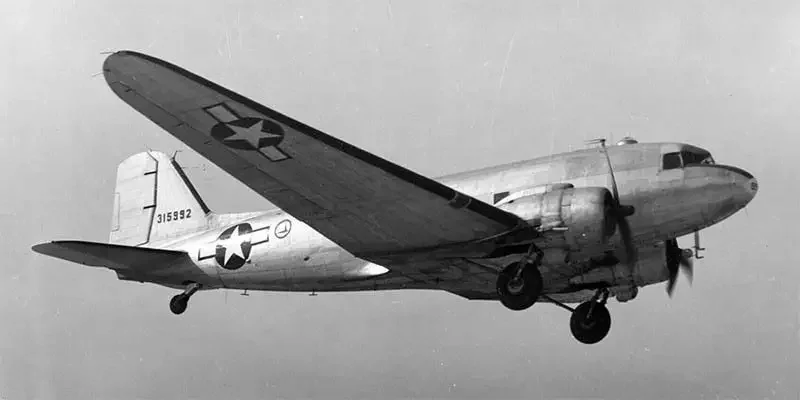- Military History
- Units & Divisions
- American Units
- Air Transport Command (1937)

Air Transport Command (1937) The wartime airline operated by U.S. Army Air Forces
This wartime airline, operated by U.S. Army Air Force, had its origin in a 1931 attempt to distribute supplies by air within the United States. The following year, the Air Corps established a provisional air transport group with one squadron at each of four major supply depots. This arrangement became permanent in 1937 and was undergoing tremendous expansion as America's entry into World War II approached.
Prewar plans called for the modernization and expansion of Army air transport. Orders were placed for the Douglas C-47 and the Curtiss C-46, and the military later acquired two other Douglas aircraft, the C-53 and C-54 and though in limited numbers only, the Lockheed C-69. Army Air Force also made use of transport and tanker versions of the B-24.
The volume of cargo that had to be moved by air brought a rapid growth of the Army air arm, but further motivation toward the establishment of the Air Transport Command came from an unexpected quarter. The need to deliver American-built airplanes into the hands of the British led to the creation of the Air Corps Ferrying Command on May 29, 1941 and this organization expanded to form the nucleus of a worldwide transport network.
In June 1942, the Ferrying Command was re-designated Air Transport Command. Brig. General Harold L. George took charge of the organization, with Cyrus R. Smith, president of American Airlines, assuming the rank of colonel to become his chief of staff. At its inception, Air Transport Command was a global airline serving the War Department. Theater commanders had their own troop carrier units for local airlift, but late in the war, the command extended its operations to include local service on the continent of Europe.
The air transport industry, which provided administrators such as Cyrus Smith, was a potential source of pilots, but this manpower reservoir of over 2,500 skilled pilots could not be exploited because the airlines already were rendering considerable support to the war effort. During 1942, for instance, commercial airlines under contract to the government performed 88 percent of the War Department's air transport activity.
Unable to call upon the airlines or to compete with the combat and training commands for veteran Air Corps pilots, Air Transport Command, like its predecessor the Ferrying Command, recruited whatever civilians were available (private pilots, crop dusters and even barnstormers). Pilots recruited in this fashion underwent additional training. Early in the war, the newly recruited civilians were hired as temporary employees, who might receive commissions after a probationary period or might be kept in civilian status. By the end of the war, however, the command was staffed only by military pilots.
The airlines aided in the training of crews for the Air Transport Command. Army Air Force schools furnished quotas of pilots, navigators, flight engineers and radio operators. These specialists then received their final indoctrination from airline instructors.
From June 1942 until Japan's surrender, the number of officers and enlisted men assigned to Air Transport Command rose from 11,000 to almost 200,000 and its aircraft increased almost fourfold to 3,700. As the command gained in numbers, experience and proficiency, the amount of flying done under contract by commercial airlines declined steadily, dropping to 68 percent in 1943, 33 percent the following year and 19 percent by the time the war ended.
From March 1942 until September 1946, Harold George was in charge of the greatest air transportation system ever devised and rose through successive promotions to three-star rank.
Inactivated on 1 June 1948, Air Transport Command was the precursor to what became the Military Air Transport Service in 1948 and was re-designated Military Airlift Command (MAC) in 1966. It was merged with MAC in 1982, providing a continuous history of long range airlift through 1992 when the mission was transferred to today's Air Mobility Command.
- {{#owner}}
- {{#url}} {{#avatarSrc}}
{{name}} {{/url}} {{^url}} {{#avatar}} {{& avatar}} {{/avatar}} {{name}} {{/url}} - {{/owner}} {{#created}}
- {{created}} {{/created}}























